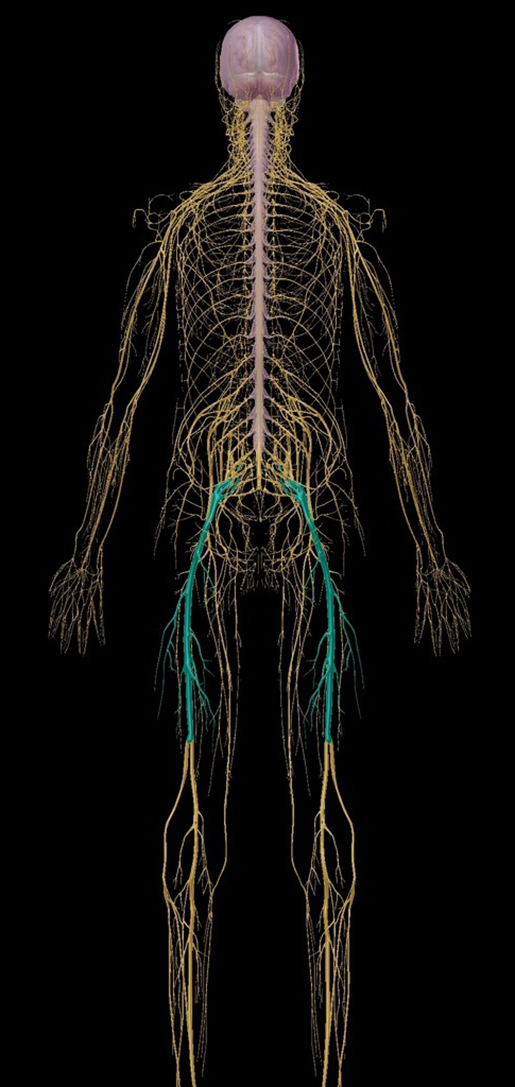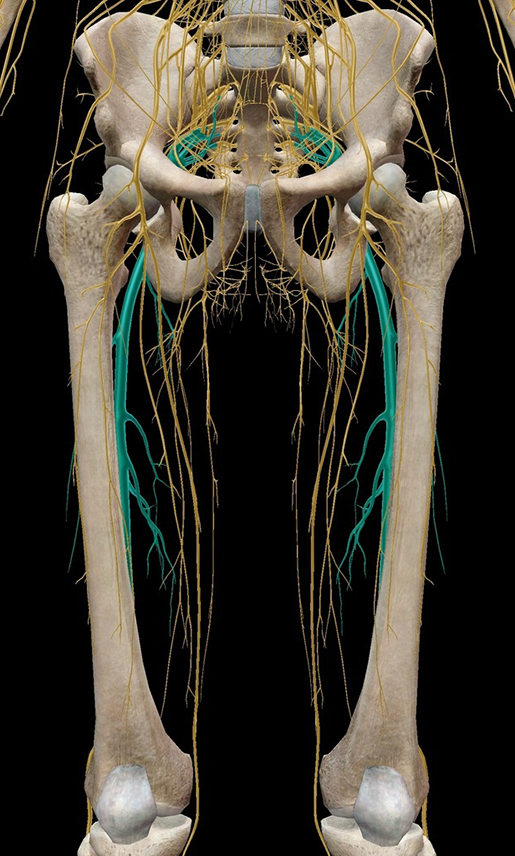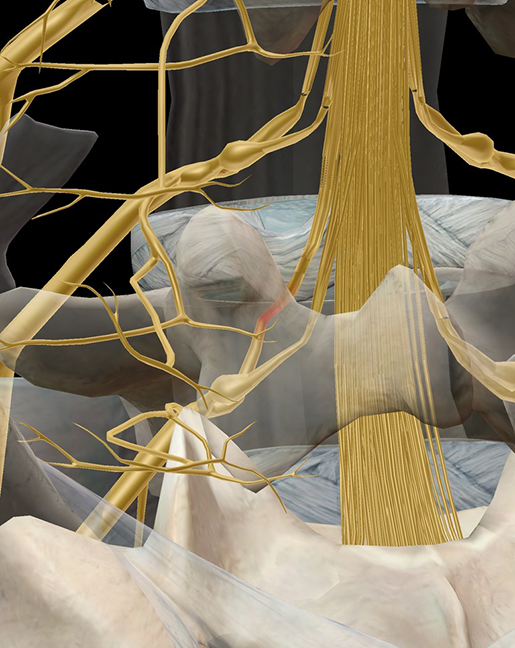A Real Pain in the Butt: The Anatomy and Pathology of Sciatica
Posted on 1/26/18 by Madison Oppenheim
I just got back from a little trip to Mexico where I was sitting in a plane seat for four hours, unable to move or walk around. We've all been there: just as you are about to get up to stretch your legs and take a little bathroom break, you hear the little beep to get back in your seat and buckle up. Except I really had to pee—so I paused Captain America: Civil War and unbuckled my seatbelt. I was just about to get up when the flight attendant told me that there was turbulence and I had to stay seated. So I plopped back down, and then, in addition to my bladder pressure, I felt a little radiating tingle in my lower back that inched its way down to my left calf.
As it turns out, the pain I felt was not sciatic nerve pain, although it could have been. It was just a little reminder that occasionally my spine needs a little TLC.
Before we can get into the causes and symptoms of sciatica, we first have to talk about the nerve that's responsible.
 Image from Human Anatomy Atlas.
Image from Human Anatomy Atlas.
The sciatic nerve branches from your lower back, through your hips and butt, and down each leg, making it the largest single nerve in the entire body. It controls muscles in the back of your knee and lower leg, while also providing sensation to the back of your thigh, part of the lower leg, and even all the way down to the sole of your foot! This master nerve can sometimes get compressed or "pinched," causing pain and discomfort in your glutes or leg.
Now, if you're like me—someone who loves to lay around rewatching episodes of The Office for the sixth time or sleeping for 14 hours—then this information may be mildly alarming, but don't worry! Sciatica itself is not a medical diagnosis but a set of symptoms caused by various lower back problems. The most common causes of sciatica are herniated discs or bone spurs, which are not caused from lack of exercise! Whew! (Although in general it's a good idea to take a walk and enjoy the weather every now and then.)
 Image from Human Anatomy Atlas.
Image from Human Anatomy Atlas.
Herniated discs occur when the soft inner material leaks out through the outer layer and pinches the neighboring nerve root.
 Image from Muscle Premium.
Image from Muscle Premium.
Bone spurs, which may develop with degenerative disc disease, may also press on the nerve, causing sciatica. Degenerative disc disease occurs when the weakened disc and inflammatory proteins located inside the disc, are exposed. This results in nerve irritation.
So, after all that, I'm sure now you're wondering "Madison, what are the symptoms? How do I know if I have this?" Well, let's clear that up!
The most common is a combination of the following symptoms:
- Constant pain in one side of your butt or one leg (rarely both sides)
- Radiating pain down the sciatic nerve: starting from the lower back and moving down the back of the thigh and into lower leg/foot
- Pain that worsens when standing or sitting but feels better when patients walk or lie down (aka watching those Office episodes I mentioned earlier)
- Pain that can be described as sharp or searing as opposed to a dull ache
- A feeling of "pins-and-needles", numbness or weakness, or even a prickling sensation
- Difficulty to stand or walk from shooting pain in one leg
Many of these symptoms may worsen with sudden movement, like coughing or sneezing, or when you change position (eg. sitting to standing).
But hey, don't let all this debilitating info get you down! There are plenty of treatment options to get you back on your feet.
There are numerous nonsurgical treatments like applying heat or ice to the affected area to alleviate pain in the initial phase. Also, you can take ibuprofen or naproxen to reduce inflammation. You can even be prescribed muscle relaxants or narcotics for a short term to alleviate pain. If you have severe pain, your doctor may prescribe an epidural steroid injection. Yes, an epidural! They are not just used in labor; epidural injections are just a way to introduce medication directly into the epidural space (the space around the dura mater, the protective layer of the spinal cord). The epidural steroid injection can reduce inflammation that might be causing the pain.
In addition to these standard treatments, some alternative treatments have also been proven effective for pain relief, such as chiropractic manipulation of your spinal cord (no, it's not just someone pushing in weird places and shaking you around). Some people report success with acupuncture and massages.
Generally, major sciatica episodes will die down within 6 to 12 weeks, at which point you should pursue a regimen of physical therapy and exercise. It also may be helpful to assess your posture and seating at work, as to not put excess strain or pressure on your spine.
Even if you have yet to feel sciatic pain, it is never too early to start some easy prevention. Just get some regular exercise in to strengthen your back and core
So, now that you're a sciatic specialist, maybe hit the gym once or twice a week and pay attention to your posture so the next time you're stuck in the middle seat of a cramped flight, you can watch all the Marvel movies you want without pain.
Be sure to subscribe to the Visible Body Blog for more anatomy awesomeness!
Are you a professor (or know someone who is)? We have awesome visuals and resources for your anatomy and physiology course! Learn more here.
Additional sources:
Hochschuler, MD Stephen H. "Sciatica Causes." Spine-health. 05 May 2016. Web. 07 July 2017.






